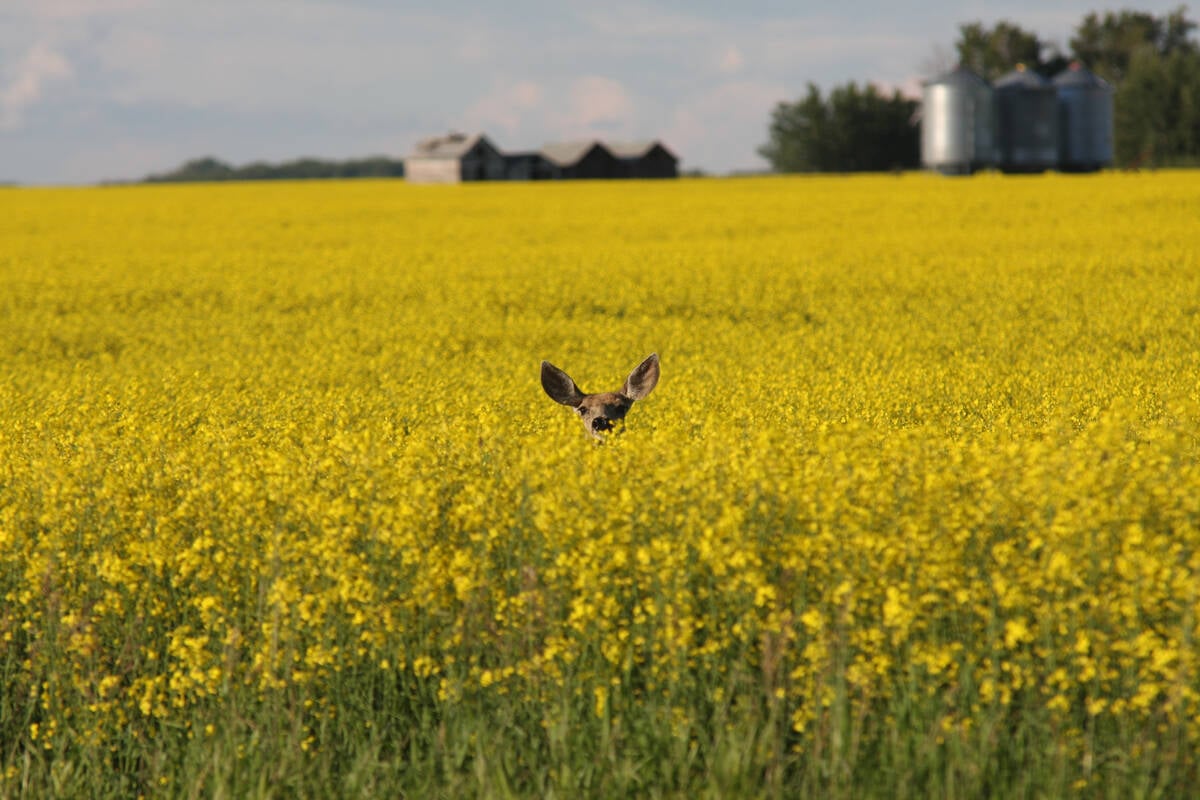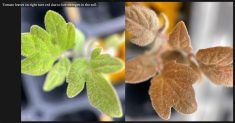SPRINGFIELD, Ill. — Organic matter content is an important field management factor because higher levels hold more moisture and nitrogen.
“The range of OM within a field can be as much as three percent,” said Marilyn Kot of Green Acres Tech in southeastern Saskatchewan.
“That represents a huge variation in the amount of nitrogen holding capacity. You need to have this data if you expect to do any sort of precision management.”
Kot installed the OpticMapper option on her Veris EC machine last September and did 3,000 acres logging electrical conductivity and organic matter data for her clients.
Read Also

Drones now used to assess wildlife crop damage in Saskatchewan
Wildlife damage in Saskatchewan crops is now assessed by drones and artificial intelligence.
“There’s this particular field I’ve been familiar with for quite a while. We have lots of data on it,” she said.
“There was one area where I could never explain the variability. It always had just a little bit more. I thought maybe they weren’t collecting the information properly. But when I saw the organic matter map, I said, ‘Oh yeah, that’s why we have the yield fluctuations.’ ”
Kot sends core samples to a soil lab to determine organic matter and then correlates those results to the base points for ground truthing. From that information, she generates an actual soil OM map of the field.
She said the results are similar when she compares organic matter readings from the lab to readings from the OpticMapper.
“The demos last fall showed me that this technology is worth the investment. Now I have to figure out how to use all the information. This is definitely a whole new frontier.
“It takes a little more management setting up to collect the extra data, but that’s not very significant because we’re running the Veris across the field anyway.”
Kot said sticking to the prescribed driving pattern is critical in any aspect of precision farming, including electrical conductivity and organic matter mapping.
To ensure that she sticks to the straight and narrow, she installed an EZ-Steer autosteer on the pick-up truck that pulls her Veris. She said it’s as easy as putting EZ-Steer on any other farm implement.
The Ford conveniently had a rubber plug in the floorboard, allowing her to bolt the vertical EZ-Steer frame directly to the frame of the truck. The system swings away from the steering wheel, but she removes it for highway driving for safety reasons.
Cory Willness, who runs the agronomic consulting service Crop Pro in northeastern Saskatchewan, bought his first Veris EC three years ago.
A second Ver is he bought this spring is equipped with the optional OpticMapper OM sensor, but he removed it for spring mapping because he had a lot of acres to cover and didn’t have time to learn how to use it.
“We’ll put it back on this fall and see how it works,” Willness said.
“If it works as well as they say, we’ll buy one for the other Veris. If not, then I guess we’ll have an expensive test unit.”
He said the EC machines have helped find a lot of hidden salinity that nobody suspected.
“It’s phenomenal for finding salinity. If you’re doing satellite imagery, you only see what’s on the surface. You don’t know what’s below.
“There are a lot of side hill discharge springs in our area where we have springs and salinity together.
“They’re sometimes really hard to see, but they can cover a lot of acres. Wherever the water flows, that’s where the salinity goes.”
Willness field maps in the Melfort and Tisdale areas where there is typically little sign of salinity.
“But there are saline spots nobody knows about up in that area. The Veris nails them every time.
“We see a very high correlation between elevation and salinity, so both machines are set up to map topography while we’re mapping EC.”
Willness said both pick-up trucks used to pull the Veris machines are equipped with GPS autosteer.
For more information, contact Kot at 306-535-2763 or greenacrestech@gmail.com or Willness at 306-874- 2425 or www.croppro.ca.















